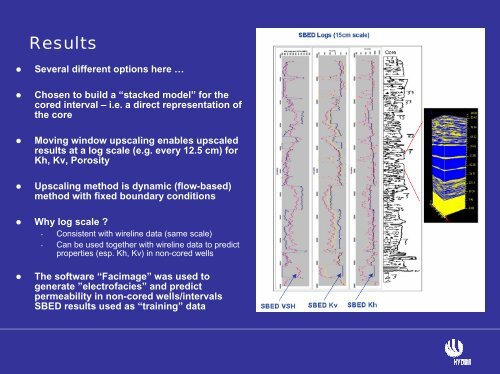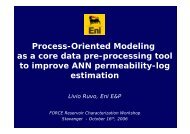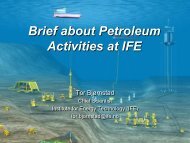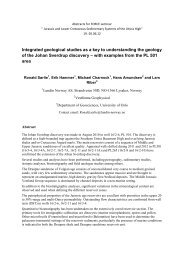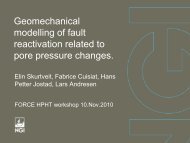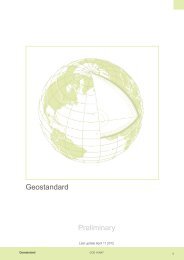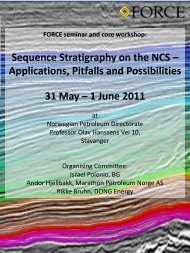Use of SBED as a tool for permeability modelling in ... - Force
Use of SBED as a tool for permeability modelling in ... - Force
Use of SBED as a tool for permeability modelling in ... - Force
You also want an ePaper? Increase the reach of your titles
YUMPU automatically turns print PDFs into web optimized ePapers that Google loves.
Results<br />
• Several different options here …<br />
• Chosen to build a “stacked model” <strong>for</strong> the<br />
cored <strong>in</strong>terval – i.e. a direct representation <strong>of</strong><br />
the core<br />
• Mov<strong>in</strong>g w<strong>in</strong>dow upscal<strong>in</strong>g enables upscaled<br />
results at a log scale (e.g. every 12.5 cm) <strong>for</strong><br />
Kh, Kv, Porosity<br />
• Upscal<strong>in</strong>g method is dynamic (flow-b<strong>as</strong>ed)<br />
method with fixed boundary conditions<br />
• Why log scale ?<br />
- Consistent with wirel<strong>in</strong>e data (same scale)<br />
- Can be used together with wirel<strong>in</strong>e data to predict<br />
properties (esp. Kh, Kv) <strong>in</strong> non-cored wells<br />
• The s<strong>of</strong>tware “Facimage” w<strong>as</strong> used to<br />
generate ”electr<strong>of</strong>acies” and predict<br />
<strong>permeability</strong> <strong>in</strong> non-cored wells/<strong>in</strong>tervals<br />
<strong>SBED</strong> results used <strong>as</strong> “tra<strong>in</strong><strong>in</strong>g” data


